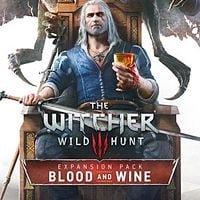The Witcher 3: Wild Hunt deleted content - Where is Iorveth?!
The third Witcher abounds with plotlines, locations, and monsters which haven’t made it into the final version of the last year’s hit. Here, we’ve assembled the most interesting ideas missing from the game.
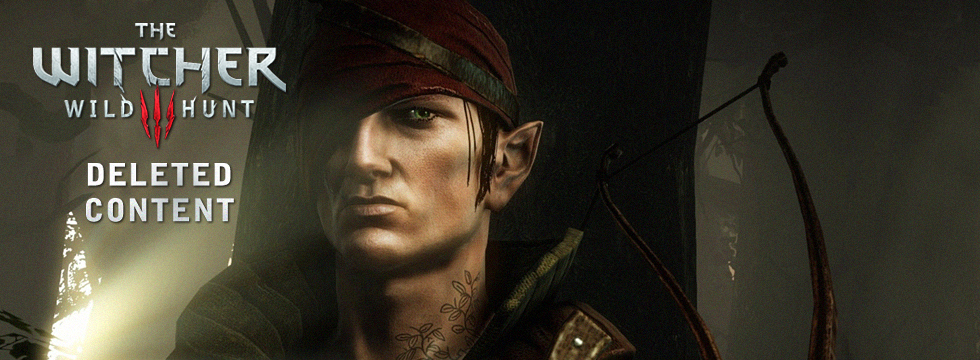
Had someone told me a couple of years ago that a game developed in Poland was going to win over 200 GOTYs, I would have nodded my head with an indulgent smile. True, Polish developers were going in the right direction for quite some time, with CD Projekt at the very front since the release of the original Witcher, but hardly anyone could’ve predicted such a grand leap in quality. The Wild Hunt seems to have achieved the impossible. Just for the record: this game isn’t flawless, but the mistakes are mostly technical – all the rest is perfectly coherent, so calling this game “complete” and “groundbreaking” is just as perfectly justified. But there always is a “but”. Even though when playing TW3 we have the impression that the world’s elements are complementing each other very well, and the world itself doesn’t really miss anything, originaly the game was supposed to look a bit different. We can learn about all the elements that were reshaped, or just dismissed altogether, from a massive data leak back from 2014. Out of respect for the dev’s job, we didn’t poke around the files themselves, but the web is full of organised and detailed information about that. In this article, we’ll look deeper into what CD Projekt Red has actually deleted… but whether or not it was worth it – you’ll have to answer yourself.

Spoiler alert! Due to the nature of the text, it may contain a lot of spoilers about the Witcher 3: Wild Hunt, as well as both the prequels. We have intentionally omitted one of the not-used alternative endings, but even without it, everything that’s further from here can seriously spoil your fun if you haven’t finished the game yet.
Characters we will never meet
Hemmelfart
Let’s begin with a smaller one. Hierarch Hemmelfart is one of the characters that were initially planned to inhabit the game world, but was soon given up on. He is only mentioned by his name in the game files, but considering his title and occupation, he might have played an important part. Despite the high position in the Church of the Eternal Fire, he was only labeled with a note saying: “he’s being manipulated by Tanja”… We’ll probably never know what was that supposed to mean.
Hvitr
Quite similarly, a certain Hvitr, didn’t manage to be included in the fun. On paper, this unusually named individual looks pretty interesting – you don’t meet a mentally-ill albino Skelligean boy every day, that’s for sure. The young lad was supposed to play a major part during one of the bigger missions on the archipelago, but the team gave up that idea in the end. For Hvitr, it meant not only a bitter farewell to a role of his life, but an exclusion from any of Geralt’s adventures whatsoever. Ouch.
Iorveth

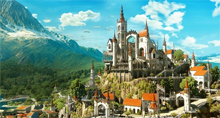
There had been a good chance of Iorveth’s appearance in the Heart of Stone DLC, but that was not the case. Today we know that he won’t appear in Blood and Wine neither – as officially acknowledged by Marcin Momot of CDPR. Saskia won’t be coming back as well.
Both these characters are pawns compared to our next guest. That’s right, your sight is not deceiving you – it’s Iorveth, the elf in charge of a Squirrel commando, who has done some serious damage in the Assassins of Kings, and was expected to pop-out at some point in the Wild Hunt. Contrary to Hvtir and Hemmelfart, his role made it into pretty advanced stages of development. The 3D models were being worked on, and his appearance in the story was being tentatively planned. According to dev’s notes, Geralt was supposed to stumble upon him in Novigrad, in the basement of Triss’ house, playing on his flute the same melody he played during the first encounter in The Witcher 2. Really cool idea, but we don’t know anything more – how much of an impact would he have made on the story remains a secret.
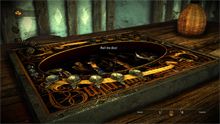
Apart from rounds of Gwent and racing horses, we were close to getting even more time-killers. The studio considered two more minigames – namely, darts, and classic dice poker. In both cases we would obviously be able to bet a sum of money, and with a bit of luck, get a nice bonus to our usual bounties.
Places we won’t go to
The list of locations that were either cut out from the game or seriously modified is pretty long, but in most cases there are little details about them. Interestingly, each of the main regions had been devoid of some interesting spots. Velen was probably most severely stripped – over a dozen of places that you won’t find in the game is listed in the docs. Not especially original “burned, wooden church” to begin with; then a haunted forest; a gingerbread cottage (yup, the one beside the Trail of Treats, mentioned by Gretka); and lastly, “a place of orgy”. The latter is probably a location where the indecent rituals of the Sabbath on the Bald Mountain would take place… if they had not been cut out from the game as well. But we’ll get to that later.
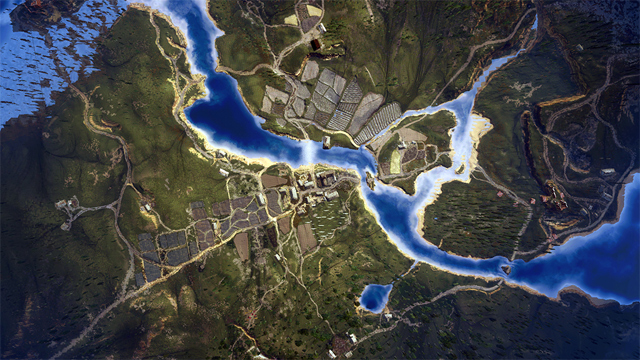
Other parts of the world weren’t so severely affected, but that doesn’t mean they came out untouched either. Novigrad entirely lost a hospital for vampires, and the interior of the Church of the Eternal Fire’s tower. Skellige lost a Niflgaardian camp near Kaer Trolde, as well as a whalers’ ship near An Skellig. There was not enough room for a very interesting Elven Cemetery too. Many of these places were supposed to be the background for quests and threads which were not implemented in the final version of the game – leaving the “bare” locations under such circumstances would simply be pointless.
The stories we won’t hear
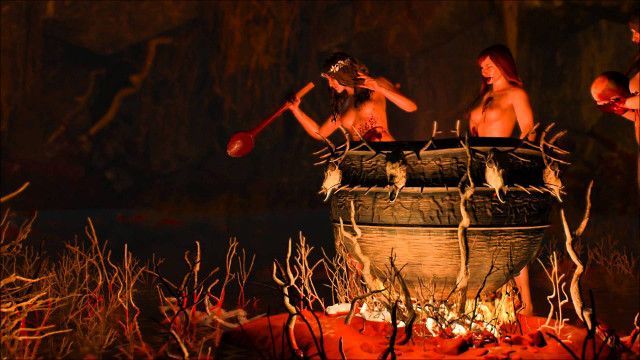
Since we’re discussing the story: time to focus on the quests that, unfortunately, we’ll never have a chance to complete. Some of the threads were discussed in detail, some were only mentioned, but there is no trace of either of them in the game. One remark before we get to the point: not many people are aware of the fact that one of the early concepts considered a possibility where the main character of the series wouldn’t be Geralt (!) – the process of the creation would then have been given to the player. Another idea for the protagonist was… Berengar, one of the last witchers, known from the original game. We can only assume, that – due to Geralt’s story meeting a definitive conclusion in the books – the same decision was being considered in case of the third game - it’s hard to disagree with the decision of using the White Wolf as the main hero, though.

Gwent turned out to be a true sensation, and many players consider this unimportant side activity one of the most enjoyable parts of the Witcher experience. Relatively simple rules - and at the same time a rich and captivating tactical layer - is the secret of proper fun that isn’t boring after a hundred rounds. Still, this part of the game might have been even bigger. There are four factions in the game: Northern Kingdoms, Nilfgaardian Empire, Scoia’tael, and Monsters. Add the neutral and special cards in. But we were almost given a fifth set: the Skellige. Before the idea was dropped, 10 cards had been designed, among them King Brans, Mousesack, Udalryk, Hjalmar, or Madman Lugos .
All right, let’s get back to the things we know for certain. First of all, the previously mentioned Sabbath on the Bald Mountain, where we would have witnessed not only sexual orgies, but also ritual suicides committed by jumping off the cliff. The idea was controversial – even horrid – so no wonder CDP has given up on this one… Less horrific, but baring far more serious consequences, would have been the events in Novigrad. The early concepts included the Free City being attacked by the Wild Hunt: the raiders would freeze (in their unique style) large portion of the settlement, and their presence would cause a great naval battle of the greatest forces of the world of the Witcher.

Talking of water and ice – there was an interesting idea concerning the fight of Ciri and Caranthir – the Navigator of the Hunt. First ideas assumed they would tango on a frozen lake in Skellige – the ashen haired girl was supposed to… ice skate during that clash (much like in the books), which totally changed the combat mechanics. It had been thrilling, and looked awesome, but a decision was made not to introduce so unconventional elements into the game. That’s not the end of deleted fights though, since another idea was that Geralt would face nobody else but… Avallac’h – soon after reaching Skellige. The cause of their disagreement remains a mystery, but a good deal of spicy details about the Elf is revealed during the game. Another thing concerning the Aen Saevherne: in the quest “Through Time and Space” the Elf takes us on a journey through other worlds – the list of unusual locations was supposedly bigger: the idea of Novigrad overrun by vegetation, with Leshens all over the place, is pretty rad. The dark corners of Rivia, a mental asylum, or dungeons underneath Oxenfurt Academy sound equally interesting.
Game mechanics we won’t experience

The plot modifications change the adventures, but it’s the mechanics that change the experience. As it turns out, some huge changes were made here. Three of them seem to be the most important: the first concerns the behavior of city guards. In the final build, the “punishment” only involves loss of cash after losing a fight with a unit of guards. But if the previous idea had been implemented, there would have been a lot less troublemaking in the cities and villages, as the proposed consequences were a lot harsher. First, we’d have to choose whether or not to pay the fine – denial meant either fighting the guards or fleeing, and in case of choosing the former and losing, we would have to say goodbye not only to some of our money, but the unused skill points as well! On top of that, Geralt would be thrown out of the city. There’s nothing we love more than mandatory walks.
CD Projekt Red also planned on posing a bigger challenge before Geralt in terms of crafting. In the game, crafting and enhancement of the equipment is simple and linear, but it was not always so. The key part here were supposed to be books; right now, they only provide additional insight into the game world, but originally they also taught Geralt things. Without reading the right book, buffing swords and armor would be impossible. “Nilfgaard’s War Tactics” increased damage dealt to the imperials, and “How to avoid bigger ships” increased the speed of boats. This complex system was dropped, however, and the developers decided that Geralt should have all these perks from the very beginning.

Those changes wouldn’t be very significant, compared to the next one, though. And it’s obviously the alleged system of vital spots. What was it about? Well, it was a combat mechanic that could be easily compared to Fallout’s VATS. Those vital spots would simply be certain places on the enemies’ bodies, which - after being hit - would cause specific effects, e.g. remove one type of attacks. The time near Geralt would slow down considerably when initiating an attack, thus allowing the player to aim at the chosen spot. Some spots would have been better protected – requiring more attacks on the same spot to pierce it. Not much is left of the slow-motion battles, though. A slight time manipulation is possible, after spending enough skill points on a certain ability, but it’s nothing compared to the original idea. If the leaked info is to be believed, there even was a special interface invented, allowing much more tactical approach to combat. Anyway, we’re left with the more dynamic combat, but I don’t hear any voices of disappointment.
Monsters we won’t kill
In this case, two categories ought to have emerged: first, the generically encountered monsters, and then those that were part of witcher contracts.
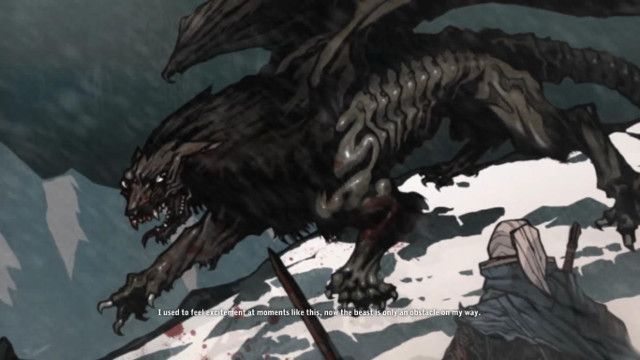
Generic monsters
The range of common abominations roaming the world in TW3 is already impressive, but the bestiary could have been even broader, had it not been for the CD Projekt Red’s cuts. According to the pre-release information, there is over a dozen of unique monsters that weren’t used. There’s no point in introducing all of them, but a couple of them deserve some attention. Resembling a giantic owl, the Korred was able to confine Geralt in an invisible ‘cage’ for a period of time. A Manticore – half lion, half scorpion with wings - able to throw extremely powerful attacks with its tail, and possessing strong immunities, rendering most attacks and tools ineffective, would be a most formidable enemy. If this doesn’t impress you, check out the Gallower. This demon’s main weapon was a rope – getting yourself caught meant immobilization and a lot of damage. The Gallower would only appear during the night – but that’s not very comforting, considering the great amount of his HP.

Contract monsters
As was the case with the generic monsters, some of the more serious beasts, that would be subjects of witcher contracts, are nowhere to be found in the game. Precisely, nine were spared the silver sword and found their way into the trash bin instead. Some of them look very interesting; my absolute favorite is the Bolt – unusual creature avoiding direct combat, able to influence minds of its opponents. Being affected by its rare skill resulted in inverting the controls for a few seconds. This isn’t the only peculiar monster on the list: a rat king – the Kneader, swarming Geralt with rodents; vault-collapsing Scharley; or the dog-summoning Bone Grinder, are among the most interesting ones.
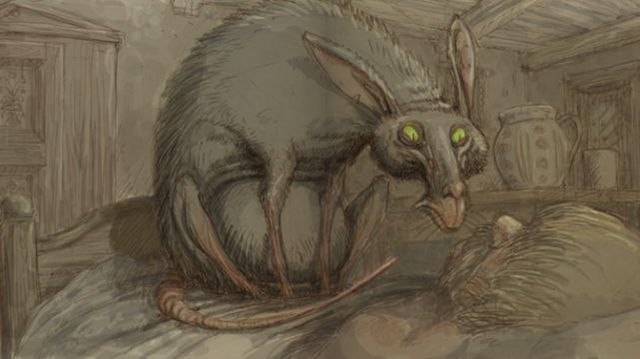
The decisions which had to be taken
As we can see, the Witcher 3 underwent some major changes, not only cosmetic and insignificant. Many of these would have changed not only the way we explore and get to know the world, but also the way we experience Geralt’s adventures. The path that a game developers have to beat is never a straight line from A to B – at each stage of development, dozens, if not hundreds, of alternatives appear, of which the most appropriate one must be chosen: those in line with gamers’ expectations and the developers’ vison. This path is rocky and full of traps – one bad decision can be deadly for the whole project. The critical acclaim, and the enormous feedback of the community, shows that CD Projekt Red has made all the right decisions, though. Of course, the “what ifs” won’t stop occupying our imagination for some time to come, for some of the ideas sound really fantastic, but let’s keep in mind that the Witcher 3: Wild Hunt is not the last game by the Polish studio.
